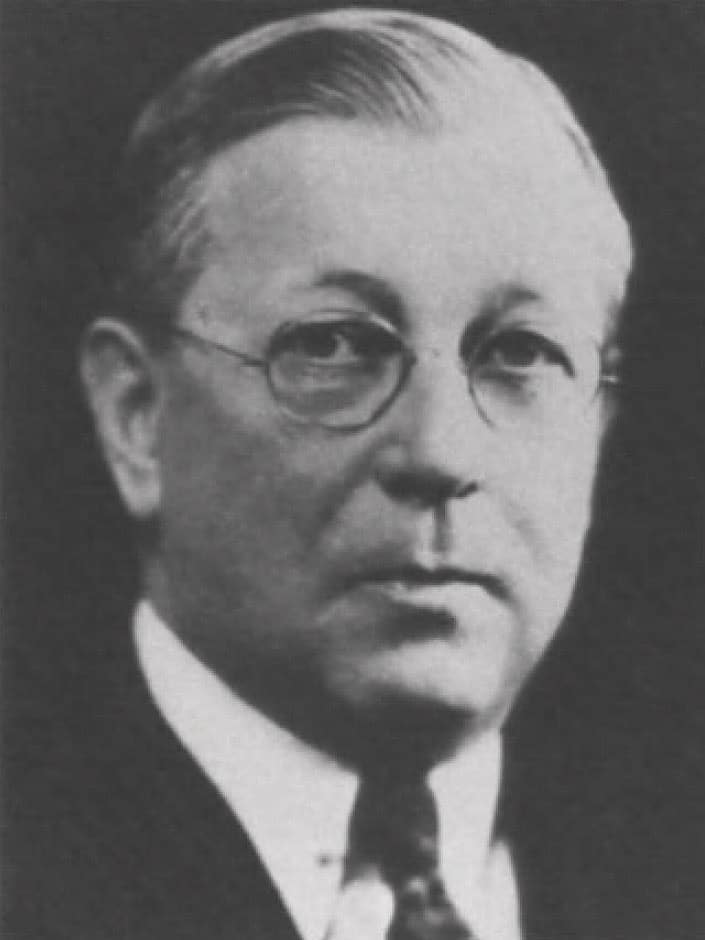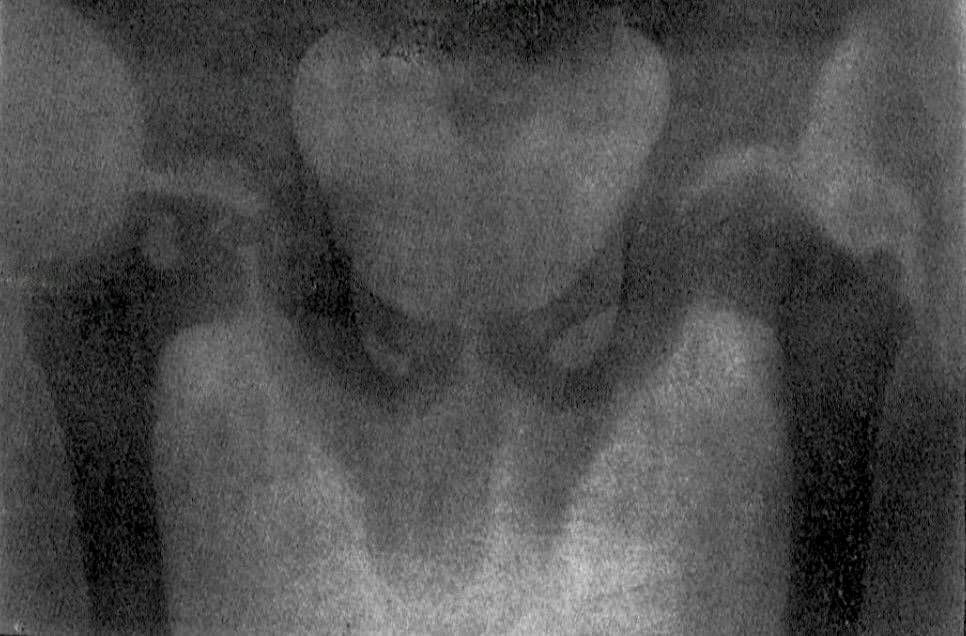Arthur Legg

Arthur Thornton Legg (1874-1939) was an American orthopedic surgeon.
Legg was an American orthopedic surgeon whose name endures through the eponym Legg–Calvé–Perthes disease. Working in Boston, he combined clinical practice with teaching and prolific writing, helping to shape early twentieth-century orthopedics. His observations on hip pathology in children, published in 1910, paralleled those of Jacques Calvé in France and Georg Perthes in Germany, establishing the triad of investigators most often associated with the condition.
Legg trained at Harvard Medical School and pursued further experience in Europe, absorbing the advances of German orthopedic surgery. Returning to the United States, he practiced at Boston Children’s Hospital and the Massachusetts General Hospital, where he became known for his systematic approach to pediatric musculoskeletal disease. He contributed to the understanding of skeletal growth, congenital deformities, and orthopedic radiology. His writings stressed the importance of careful clinical observation supported by imaging.
Respected as a clinician, teacher, and author, Legg was active in national and international orthopedic societies. His legacy was not confined to his research: he helped secure the professional status of orthopedics as a specialty within American medicine.
Biographical Timeline
- 1874 – Born April 19, in Chelsea, Massachusetts
- 1896 – Graduated A.B., Harvard College.
- 1900 – Received M.D., Harvard Medical School.
- 1900–1901 – House officer at Boston City Hospital; began working at Children’s Hospital, Boston.
- 1901–1904 – Orthopaedic training in Boston, New York, and Vienna; studied under Hoffa, Lorenz, and Müller.
- 1904–1906 – Assistant surgeon, Boston Children’s Hospital.
- 1907–1909 – Published early work on orthopaedic surgery, focusing on scoliosis and hip disease.
- 1910 – Published An obscure affection of the hip joint (Boston Med Surg J.), describing five cases of what became known as Legg–Calvé–Perthes disease.
- 1910–1914 – Orthopaedic surgeon, Massachusetts General Hospital; recognized authority on hip deformities.
- 1914–1918 – Served as Major in the Medical Corps, U.S. Army during WWI; organized orthopaedic care for wounded soldiers.
- 1921–1929 – Professor of Orthopaedic Surgery, Tufts Medical School.
- 1929 – Published monograph The Classic: Legg’s Disease (New York), expanding on his earlier work on the juvenile hip.
- 1930s – Continued teaching and research; focused on scoliosis, coxa vara, and juvenile hip disorders.
- 1939 – Died July 8, suddenly of angina pectoris, aged 64 at his home in Boston, Massachusetts
Medical Eponyms
Legg-Calvé-Perthes disease (LCPD); (1910)
Legg–Calvé–Perthes disease (LCPD) is an idiopathic avascular necrosis of the proximal femoral epiphysis in children. It typically presents insidiously, sometimes after minor trauma, with hip pain, limp, or restricted movement. It most often affects boys aged 4–10 years, is unilateral in 90% of cases, and when bilateral, the hips are usually affected sequentially rather than simultaneously.
In 1910, Legg described cases of juvenile hip disease in children at Boston Children’s Hospital, characterised by limp, restricted movement, and radiographic flattening of the femoral head.
He emphasised the process as distinct from tuberculosis, arguing that the condition represented a unique disorder of the proximal femoral epiphysis. His observations were published almost simultaneously with those of Jacques Calvé in France and Georg Perthes in Germany, giving rise to the eponym Legg–Calvé–Perthes disease.

The fifth case (Dr. Goldwaith’s) was a boy of six, who came to him in December, 1908. One year previous he had a fall in which the legs were spread apart. He was lame for a week, and apparently recovered. Seven months later a limp on the left was noticed. He was restless at night and had indefinite pain referred chiefly to the left groin…
The Roentgenogram showed a flattened head and a distinct necrotic area just outside the epiphyseal line in the neck, with apparently some thickening of the neck…
…and at this time it seems to me that a possible explanation of the condition is that the injury may indirectly cause this condition by causing injury or displacement at the epiphyseal line, whereby the nutrition of the head, coming mostly through the neck, is impaired, and by the poorly nourished epiphysis bearing on the acetabulum, it becomes flattened.
Legg A. 1910
Controversy
Dates of Birth and Death
There is longstanding confusion regarding the vital dates of Arthur Thornton Legg. His obituary in the Boston Medical and Surgical Journal (1939) recorded his life span as November 28, 1874 – January 19, 1939. However, cemetery records and his gravestone at Woodlawn Cemetery, Massachusetts, clearly document April 19, 1874 – July 8, 1939.
The gravestone inscriptions for both Legg and his wife, Marie L., are consistent and widely accepted as the authoritative record. The discrepancy almost certainly reflects an error in the obituary notice, which has been repeated in secondary sources.
Major Publications
- Legg AT. The cause of atrophy in joint disease. American Journal of Orthopedic Surgery, 1908-1909; 6: 84-90.
- Legg AT. An obscure affection of the hip-joint. Boston Medical and Surgical Journal. 1910; 162: 202–204. [Legg-Calvé-Perthes disease]
- Legg AT. The Importance of the Early Recognition of Acute Arthritis of the Hip-Joint in Infants. The Boston Medical and Surgical Journal, 1914; 170(14): 527–528.
- Legg AT. Osteochondral trophopathy of the hip joint. Surgery, Gynecology & Obstetrics, 1916; 22: 307
- Legg AT. Differential Diagnosis of Diseases of the Hip-Joint in Children. Boston Med Surg J 1920; 182:602-606
- Legg AT. Legg-Perthes’ disease with special reference to prognosis & treatment. 1929; 6(6): 793
- Legg AT, Merrill JB. Physical therapy in infantile paralysis. 1932
- Legg AT. The early treatment of poliomyelitis and the importance of physical therapy: Chairman’s address. JAMA. 1936; 107(9): 633–635.
- Legg AT. An Analysis of the 1935 Epidemic of Infantile Paralysis in Massachusetts. N Engl J Med 1937; 217:507-511
References
Biography
- Arthur Thornton Legg. N Engl J Med 1939; 221: 436-438
- Arthur Thornton Legg. The Journal of Bone and Joint Surgery 1939; 21(4): 1054
- Mostofi SB. Arthur Thornton Legg. Who’s Who in Orthopedics. Springer. 2005: 189
- Bibliography. Legg, Arthur T. WorldCat Identities
Eponymous terms
- Schulitz KP, Dustmann HO. Arthur Thornton Legg (1874–1939). In: Morbus Perthes: Ätiopathogenese, Differentialdiagnose, Therapie und Prognose. Springer. 1991: 8-10
Eponym
the person behind the name
BA MA (Oxon) MBChB (Edin) FACEM FFSEM. Emergency physician, Sir Charles Gairdner Hospital. Passion for rugby; medical history; medical education; and asynchronous learning #FOAMed evangelist. Co-founder and CTO of Life in the Fast lane | On Call: Principles and Protocol 4e| Eponyms | Books |
